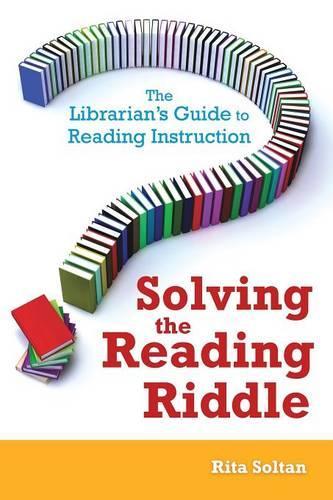
Solving the Reading Riddle: The Librarian's Guide to Reading Instruction
(Paperback)
Publishing Details
Solving the Reading Riddle: The Librarian's Guide to Reading Instruction
By (Author) Rita Soltan
Bloomsbury Publishing PLC
Libraries Unlimited Inc
15th April 2010
United States
Classifications
Primary and Secondary Educational
Non Fiction
027.6
Physical Properties
Paperback
144
Width 156mm, Height 235mm
227g
Description
This book explores what the past 75 years of reading instruction has meant to children, teachers, and parents, and how children's librarians and school media specialists are a crucial part of the developing philosophy and strategy. As a children's librarian, you are increasingly being called upon to support schools and parents in teaching children to readfrom early literacy initiatives and read-alouds to parent workshops and collection development endeavors. Yet, if you're like most public librarians, you probably have no clue as to what reading strategies other educators use. Understanding reading instruction theory and practice can help you function better in these roles and communicate more effectively with other educators and parents. Solving the Reading Riddle: The Librarian's Guide to Reading Instruction explains the theories and shows you how to effectively integrate reading instruction theory into your roles as reading advocate, family reading coach, partner with educators, and keeper of the books. Designed for public librarians, this book is also beneficial reading for LIS students in children's librarianship courses, and for teacher librarians needing more information on this topic.
Reviews
Very nicely organized and thoroughly 'user-friendly', Solving the Reading Riddle is an ideal Library Science curriculum textbook and a highly recommended addition to academic Library Science reference collections and professional reading lists. * Midwest Book Review *
Librarians have always promoted reading, usually emphasizing "good reads." In today's environment, librarians need to participate more centrally in reading instruction. Leveraging her reading and public librarian experience, author Soltan provides background information about reading instruction and suggests ways for librarians to get involved. Basically, she advocates a balanced reading-instruction approach of rich materials and reading skills (e.g., phonics, comprehension strategies, etc.). She describes a sampling of intervention programs and leveling processes. In her strongest chapter, Soltan suggests ways for librarians to serve as reading advocates and provides several lists of specialized children's books (e.g., pattern stories, graphic novels for struggling readers). She also describes ways to coach family reading activities and work with educators. The book has some useful ideas, particularly for working with families. * Booklist Online *
Author Bio
Rita Soltan is currently an independent library youth services consultant and reviews children's books for Kirkus Reviews, The Horn Book Guide, and School Library Journal.
